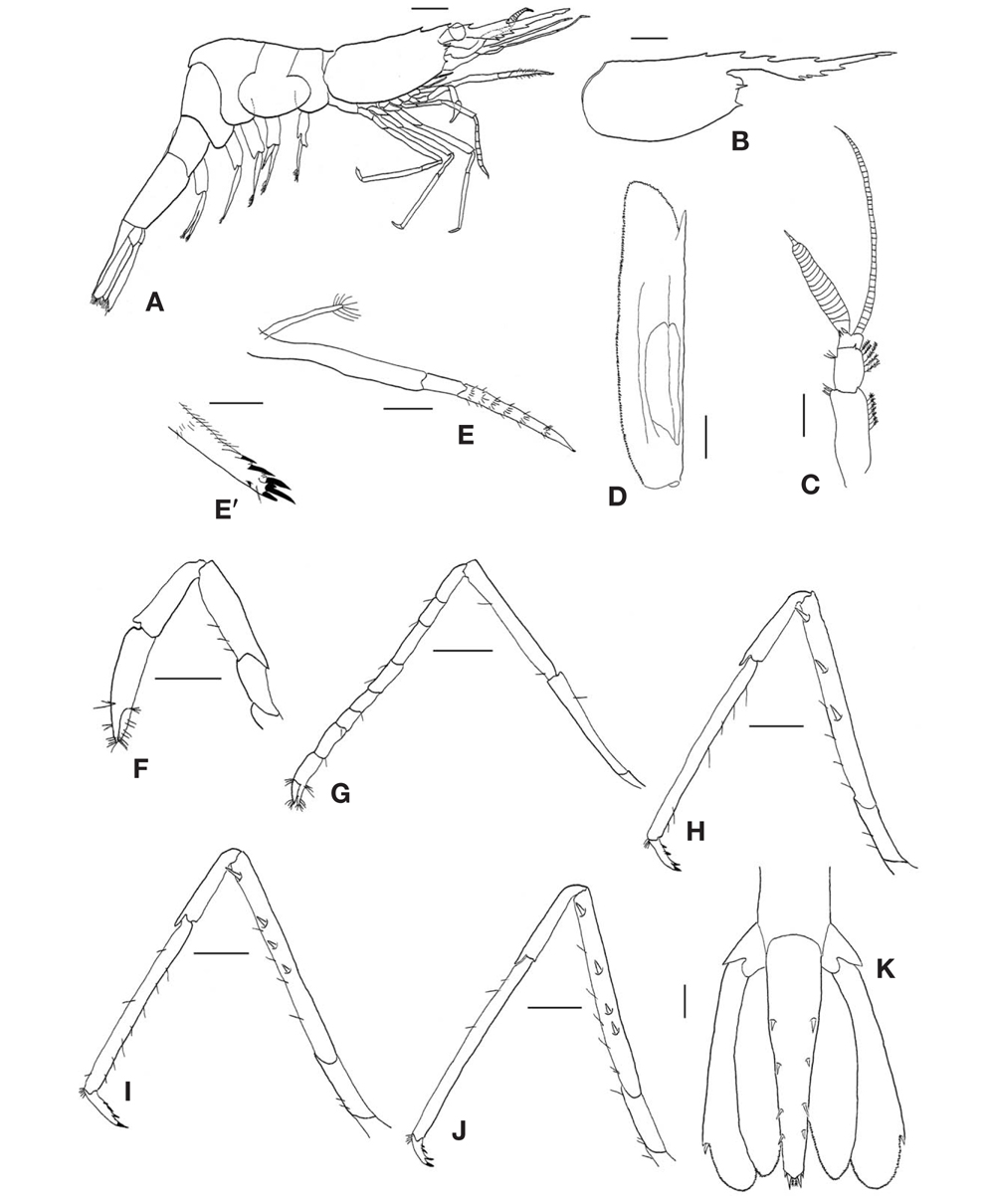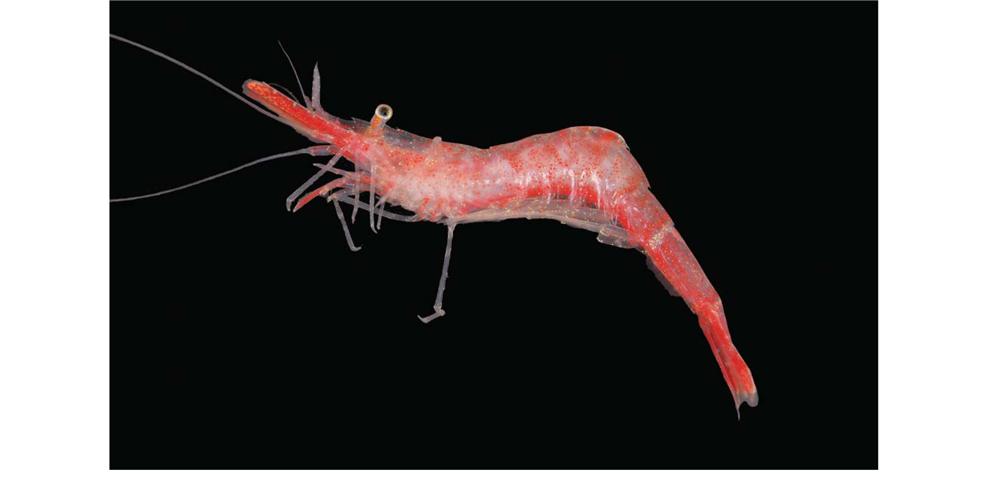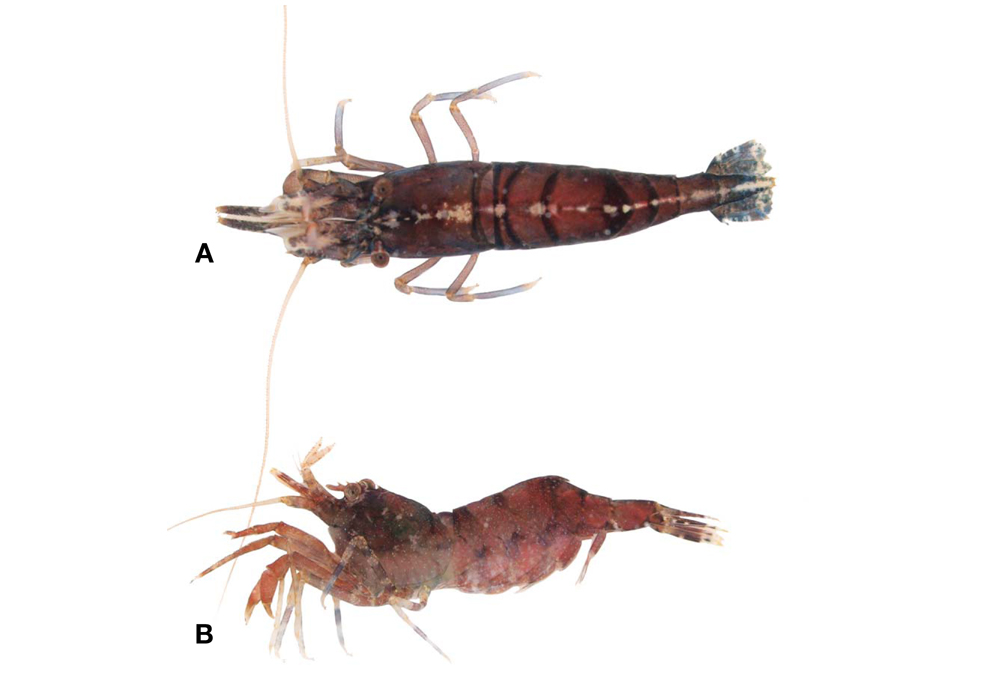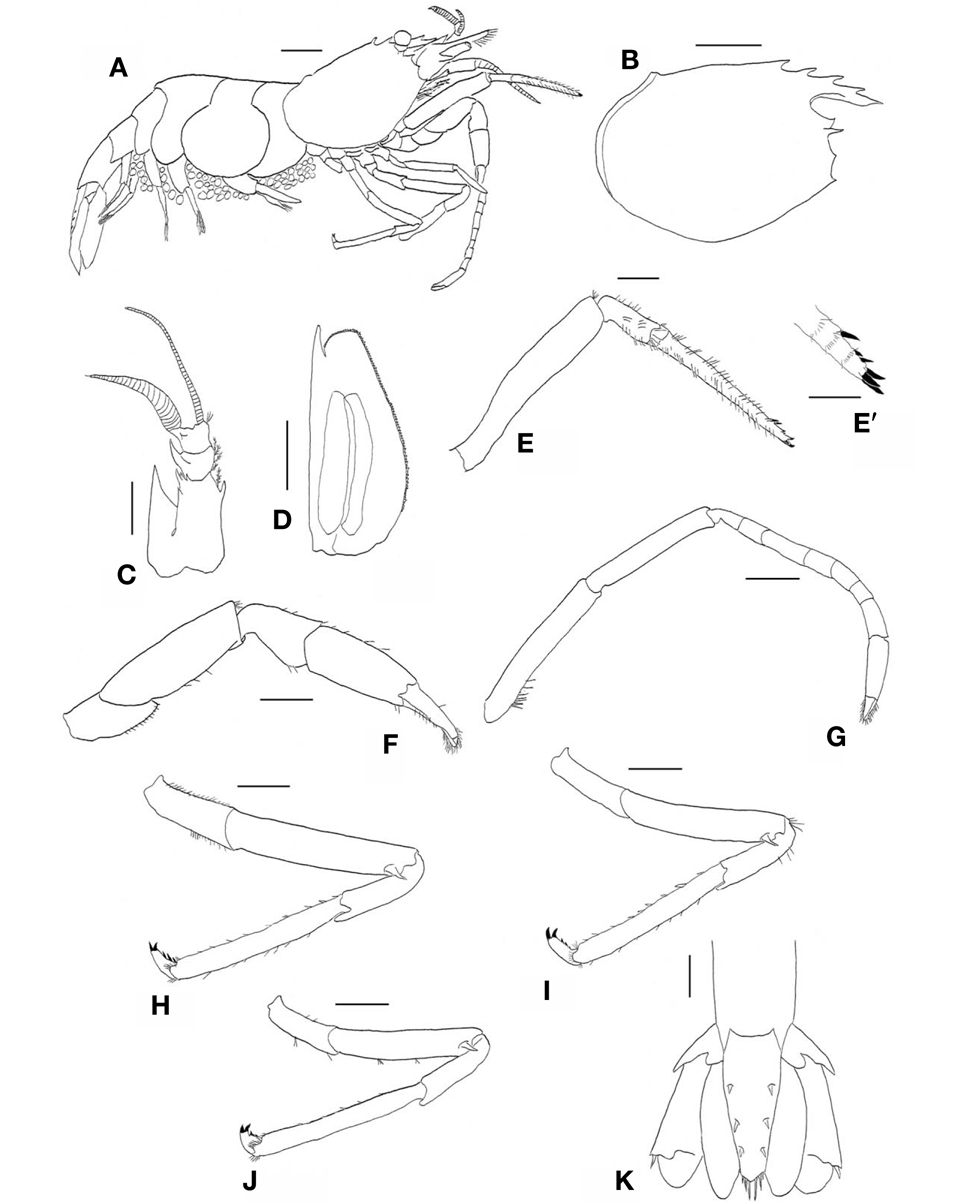



Two species of hippolytid shrimps, Eualus kuratai Miyake and Hayashi, 1967 and Heptacarpus igarashii Hayashi and Chiba, 1989, were collected at a sea cucumber farm from the East Sea. These species are described and illustrated for the first time in Korea. Eualus kuratai is closely related to E. middendorffi; however, it lacks a dorsomedian spine on the fourth and fifth abdominal somites. Heptacarpus igarashii can be easily distinguished from other Korean Heptacarpus species due to its short rostrum that lacks ventral teeth on margin. This report extends the previously known ranges from Japan and Korea. In Korea, both genera, Eualus and Heptacarpus, have seven species according to the present report, respectively; moreover, hippolytid shrimps now consist of 31 species of nine genera.
The genus
During a survey in the area of sea cucumber farms, a number of small crabs and shrimps were collected. Among the shrimps caught, two species of hippolytid shrimps,
Postorbital carapace length is abbreviated as “CL”. CL is an indication of the size of the specimen and is measured from the posterior margin of the orbit to the posterior middorsal margin of the carapace. Specimens were preserved in 95% ethanol. The materials examined in this study were deposited at Silla University in Busan, Korea.
Order Decapoda Latreille, 1803 Superfamily Alpheoidea Rafinesque, 1815 Family Hippolytidae Bate, 1888 Genus Eualus Thallwitz, 1892
1*Eualus kuratai Miyake and Hayashi, 1967 (Figs. 1, 2)
Material examined. Korea: 1♂ (CL 8.08 mm), Daejin (Yeongdeok), 6 May 2012, Lee SH, at a sea cucumber farm in approximately 38 m depth.
Description. Body (Figs. 1A, 2) small size. Rostrum (Fig. 1A, B) nearly straight, directed forward, exceeding distal margin of antennular peduncle, dorsal margin with 4 small teeth, including 3 teeth on rostrum proper and 1 postrostral tooth, ventral margin with 6 small teeth. Carapace (Fig. 1A, B) shorter than rostrum; antero-lateral angle with well developed antennal spine; pterygostomian spine present. Abdomen (Fig. 1A) dorsally rounded. Pleuron of third somite with obtusely pointed, but both fourth and fifth somites entirely smooth, without dorsomedian spine; pleuron of fifth somite pointed posteriorly. Telson (Fig. 1A, K) as long as sixth somite, with 4 pairs of spines; 1 pair of plumose setae and 2 pairs of spines terminally, inner pair longer than outer one. Eye (Fig. 1A) cylindrical; eyestalk slightly longer than cornea. Antennular peduncle (Fig. 1C) extending to middle point of rostrum; stylocerite absent. Antennal scale (Fig. 1D) long, extending to rostral apex by inner angle of lamellar tip; equal in breadth at both of proximal and distal parts. Third maxilliped (Fig. 1A, E, E′) overreaching tip of antennular peduncle; exopod well developed. First pereopod (Fig. 1A, F) moderately stout, reaching to second segment of antennular peduncle. Second pereopod (Fig. 1A, G) slender, carpus dividing into 7 articles; chela small. Third pereopod (Fig. 1A, H) reaching forward nearly as far as lateral spine of antennal scale; merus with 3 lateral spines. Fourth pereopod (Fig. 1A, I) similar to third pereopod; merus with 4 lateral spines. Fifth pereopod (Fig. 1A, J) as in fourth pereopod.
Color. Dense red spots over transparent body with scattering of yellow spots. Antennal scale and telson entirely red (Fig. 2).
Distribution. Japan, Between Rishiri Island and Rebun Island, Hokkaido, 100-150 m deep (Miyake and Hayashi, 1967), and now Korea, Daejin in approximately 38 m depth.
Remarks. This specimen generally agrees well with the original description of
Genus Heptacarpus Holmes, 1900
2*Heptacarpus igarashii Hayashi and Chiba, 1989 (Figs. 3, 4)
Material examined. Korea: 1♀ (CL 6.55 mm), Daejin (Yeongdeok), 6 May 2012, Lee SH, at a sea cucumber farm in approximately 38 m depth.
Description. Body (Figs. 3, 4) small size. Rostrum (Fig. 4A, B) short and spiniform, nearly straight and apically downward, reaching slightly beyond end of eye, dorsal margin with 4 teeth, including 2 teeth on rostrum proper and 2 postrostral teeth, ventral margin unarmed. Carapace (Fig. 4A, B) smooth, about 3 times as long as rostrum; suborbital margin rounded; antennal spine sharp and larger. Abdomen (Fig. 4A) smooth. Pleura of fourth and fifth somites pointed posteriorly, spine of fourth somite small. Telson (Fig. 4A, K) shorter than uropod, with 3 pairs of dorsal spines; posterior margin ending in acute tip, with 3 pairs of unequal spines. Eye (Fig. 4A) cylindrical; cornea slightly shorter than eyestalk. Antennular peduncle (Fig. 4C) reaching to midpoint of antennal scale; first segment longer than distal two segments combined, with 3 marginal spinules; second and third segments subequal, each with single, rather large marginal spine; stylocerite reaching beyond slightly distal margin of first segment. Antennal scale (Fig. 4D) long, 3.0-3.5 times as long as broad. Third maxilliped (Fig. 4A, E, E′) reaching beyond antennal scale by distal two segments; with rod-like epipod. First pereopod (Fig. 4A, F) robuster, reaching beyond antennal scale by distal half of palm; chela less than twice as long as carpus; merus shorter than chela, without subterminal spine. Second pereopod (Fig. 4A, G) slender, reaching beyond antennal scale by half of carpus, carpus dividing into 7 articles; chela small; ischium longer than merus. Third pereopod (Fig. 4A, H) reaching beyond antennal scale by dactylus or distal half of propodus; merus with single subterminal spine; propodus as long as merus, both with about 10 pairs of spinules on posterior margins; dactylus biunguiculate, with 4 spinules on posterior margin. Epipod present on first 3 pereopods. Fourth pereopod (Fig. 4A, I) falling short of end of antennal scale; merus with single subterminal spine; propodus as long as merus, both shorter than those of third pereopod. Fifth pereopod (Fig. 4A, J) reaching to end of antennular peduncle, merus with 1 small subterminal spine, shorter than that of fourth pereopod; propodus longer than merus, as long as that of fourth pereopod.
Color. Brownish body with dark brown stripes on abdomen dorsally. Tail fan dark brown (Fig. 3).
Distribution. Japan (Hayashi and Chiba, 1989), and now Daejin in approximately 38 m depth.
Remarks. This specimen fits well with the description of





